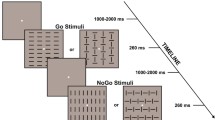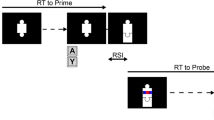Abstract
It has been shown that frontal cortical areas increase their activity during error perception and error processing. However, it is not yet clear whether perception of motor errors is processed in the same frontal areas as perception of errors in cognitive tasks. It is also unclear whether brain activity level is influenced by the magnitude of error. For this purpose, we conducted a study in which subjects were confronted with motor and non-motor errors, and had them perform a sensorimotor transformation task in which they were likely to commit motor errors of different magnitudes (internal errors). In addition to the internally committed motor errors, non-motor errors (external errors) were added to the feedback in some trials. We found that activity in the anterior insula, inferior frontal gyrus (IFG), cerebellum, precuneus, and posterior medial frontal cortex (pMFC) correlated positively with the magnitude of external errors. The middle frontal gyrus (MFG) and the pMFC cortex correlated positively with the magnitude of the total error fed back to subjects (internal plus external). No significant positive correlation between internal error and brain activity could be detected. These results indicate that motor errors have a differential effect on brain activity compared with non-motor errors.


Similar content being viewed by others
References
Abler B, Walter H, Erk S (2005) Neural correlates of frustration. Neuroreport 16:669–672
Annett M (1970) A classification of hand preference by association analysis. Br J Psychol 61:303–321
Baumgartner T, Lutz K, Schmidt CF, Jancke L (2006) The emotional power of music: how music enhances the feeling of affective pictures. Brain Res 1075:151–164
Blakemore SJ (2003) Deluding the motor system. Conscious Cogn 12:647–655
Blakemore SJ, Sirigu A (2003) Action prediction in the cerebellum and in the parietal lobe. Exp Brain Res 153:239–245
Blakemore SJ, Frith CD, Wolpert DM (2001) The cerebellum is involved in predicting the sensory consequences of action. Neuroreport 12:1879–1884
Botvinick MM, Braver TS, Barch DM, Carter CS, Cohen JD (2001) Conflict monitoring and cognitive control. Psychol Rev 108:624–652
Brazdil M, Mikl M, Marecek R, Krupa P, Rektor I (2007) Effective connectivity in target stimulus processing: a dynamic causal modeling study of visual oddball task. Neuroimage 35:827–835
Bubic A, von Cramon DY, Jacobsen T, Schroger E, Schubotz RI (2009) Violation of expectation: neural correlates reflect bases of prediction. J Cogn Neurosci 21:155–168
Buchel C, Friston KJ (1998) Dynamic changes in effective connectivity characterized by variable parameter regression and Kalman filtering. Hum Brain Mapp 6:403–408
Buchel C, Holmes AP, Rees G, Friston KJ (1998) Characterizing stimulus-response functions using nonlinear regressors in parametric fMRI experiments. Neuroimage 8:140–148
Buchel C, Dolan RJ, Armony JL, Friston KJ (1999) Amygdala-hippocampal involvement in human aversive trace conditioning revealed through event-related functional magnetic resonance imaging. J Neurosci 19:10869–10876
Carter CS, Braver TS, Barch DM, Botvinick MM, Noll D, Cohen JD (1998) Anterior cingulate cortex, error detection, and the online monitoring of performance. Science 280:747–749
Casey BJ, Thomas KM, Welsh TF, Badgaiyan RD, Eccard CH, Jennings JR, Crone EA (2000) Dissociation of response conflict, attentional selection, and expectancy with functional magnetic resonance imaging. Proc Natl Acad Sci USA 97:8728–8733
Chaminade T, Fonlupt P (2003) Changes of effective connectivity between the lateral and medial parts of the prefrontal cortex during a visual task. Eur J Neurosci 18:675–679
Chiu PH, Holmes AJ, Pizzagalli DA (2008) Dissociable recruitment of rostral anterior cingulate and inferior frontal cortex in emotional response inhibition. Neuroimage 42:988–997
Debener S, Ullsperger M, Siegel M, Fiehler K, von Cramon DY, Engel AK (2005) Trial-by-trial coupling of concurrent electroencephalogram and functional magnetic resonance imaging identifies the dynamics of performance monitoring. J Neurosci 25:11730–11737
Fiehler K, Ullsperger M, von Cramon DY (2004) Neural correlates of error detection and error correction: is there a common neuroanatomical substrate? Eur J Neurosci 19:3081–3087
Fletcher PC, Anderson JM, Shanks DR, Honey R, Carpenter TA, Donovan T, Papadakis N, Bullmore ET (2001) Responses of human frontal cortex to surprising events are predicted by formal associative learning theory. Nat Neurosci 4:1043–1048
Floyer-Lea A, Matthews PM (2004) Changing brain networks for visuomotor control with increased movement automaticity. J Neurophysiol 92:2405–2412
Floyer-Lea A, Matthews PM (2005) Distinguishable brain activation networks for short- and long-term motor skill learning. J Neurophysiol 94:512–518
Friston KJ, Frith CD, Turner R, Frackowiak RS (1995) Characterizing evoked hemodynamics with fMRI. Neuroimage 2:157–165
Hariri AR, Bookheimer SY, Mazziotta JC (2000) Modulating emotional responses: effects of a neocortical network on the limbic system. Neuroreport 11:43–48
Holroyd CB, Nieuwenhuis S, Yeung N, Nystrom L, Mars RB, Coles MG, Cohen JD (2004) Dorsal anterior cingulate cortex shows fMRI response to internal and external error signals. Nat Neurosci 7:497–498
Huettel SA, McCarthy G (2004) What is odd in the oddball task? Prefrontal cortex is activated by dynamic changes in response strategy. Neuropsychologia 42:379–386
Imamizu H, Kawato M (2009) Brain mechanisms for predictive control by switching internal models: implications for higher-order cognitive functions. Psychol Res 73(4):527–544
Imamizu H, Kuroda T, Miyauchi S, Yoshioka T, Kawato M (2003) Modular organization of internal models of tools in the human cerebellum. Proc Natl Acad Sci USA 100:5461–5466
Imamizu H, Kuroda T, Yoshioka T, Kawato M (2004) Functional magnetic resonance imaging examination of two modular architectures for switching multiple internal models. J Neurosci 24:1173–1181
Imamizu H, Higuchi S, Toda A, Kawato M (2007) Reorganization of brain activity for multiple internal models after short but intensive training. Cortex 43:338–349
Jabbi M, Bastiaansen J, Keysers C (2008) A common anterior insula representation of disgust observation, experience and imagination shows divergent functional connectivity pathways. PLoS One 3:e2939
Kawato M (1999) Internal models for motor control and trajectory planning. Curr Opin Neurobiol 9:718–727
Kawato M, Wolpert D (1998) Internal models for motor control. Novartis Found Symp 218:291–304 discussion 304–307
Keisker B, Hepp-Reymond MC, Blickenstorfer A, Meyer M, Kollias SS (2009) Differential force scaling of fine-graded power grip force in the sensorimotor network. Hum Brain Mapp 30(8):2453–2465
Kerns JG, Cohen JD, AWr MacDonald, Cho RY, Stenger VA, Carter CS (2004) Anterior cingulate conflict monitoring and adjustments in control. Science 303:1023–1026
Kiehl KA, Liddle PF (2001) An event-related functional magnetic resonance imaging study of an auditory oddball task in schizophrenia. Schizophr Res 48:159–171
Knutson B, Cooper JC (2005) Functional magnetic resonance imaging of reward prediction. Curr Opin Neurol 18:411–417
Koelsch S, Fritz T, von Cramon DY, Muller K, Friederici AD (2006) Investigating emotion with music: an fMRI study. Hum Brain Mapp 27:239–250
Kuchinke L, Jacobs AM, Grubich C, Vo ML, Conrad M, Herrmann M (2005) Incidental effects of emotional valence in single word processing: an fMRI study. Neuroimage 28:1022–1032
Lane RD, Reiman EM, Ahern GL, Schwartz GE, Davidson RJ (1997) Neuroanatomical correlates of happiness, sadness, and disgust. Am J Psychiatry 154:926–933
Levesque J, Joanette Y, Mensour B, Beaudoin G, Leroux JM, Bourgouin P, Beauregard M (2003) Neural correlates of sad feelings in healthy girls. Neuroscience 121:545–551
Li CS, Yan P, Chao HH, Sinha R, Paliwal P, Constable RT, Zhang S, Lee TW (2008) Error-specific medial cortical and subcortical activity during the stop signal task: a functional magnetic resonance imaging study. Neuroscience 155:1142–1151
Luppino G, Matelli M, Camarda R, Rizzolatti G (1993) Corticocortical connections of area F3 (SMA-proper) and area F6 (pre-SMA) in the macaque monkey. J Comp Neurol 338:114–140
Nachev P, Wydell H, O’neill K, Husain M, Kennard C (2007) The role of the pre-supplementary motor area in the control of action. Neuroimage 36(Suppl 2):T155–T163
Ochsner KN, Ray RD, Cooper JC, Robertson ER, Chopra S, Gabrieli JD, Gross JJ (2004) For better or for worse: neural systems supporting the cognitive down- and up-regulation of negative emotion. Neuroimage 23:483–499
Phan KL, Wager T, Taylor SF, Liberzon I (2002) Functional neuroanatomy of emotion: a meta-analysis of emotion activation studies in PET and fMRI. Neuroimage 16:331–348
Phelps EA, O’Connor KJ, Gatenby JC, Gore JC, Grillon C, Davis M (2001) Activation of the left amygdala to a cognitive representation of fear. Nat Neurosci 4:437–441
Phillips ML, Drevets WC, Rauch SL, Lane R (2003) Neurobiology of emotion perception. I: The neural basis of normal emotion perception. Biol Psychiatry 54:504–514
Picard N, Strick PL (2001) Imaging the premotor areas. Curr Opin Neurobiol 11:663–672
Ridderinkhof KR, Ullsperger M, Crone EA, Nieuwenhuis S (2004) The role of the medial frontal cortex in cognitive control. Science 306:443–447
Sanfey AG, Rilling JK, Aronson JA, Nystrom LE, Cohen JD (2003) The neural basis of economic decision-making in the Ultimatum Game. Science 300:1755–1758
Siegrist J, Menrath I, Stocker T, Klein M, Kellermann T, Shah NJ, Zilles K, Schneider F (2005) Differential brain activation according to chronic social reward frustration. Neuroreport 16:1899–1903
Tanji J (1994) The supplementary motor area in the cerebral cortex. Neurosci Res 19:251–268
Toni I, Ramnani N, Josephs O, Ashburner J, Passingham RE (2001a) Learning arbitrary visuomotor associations: temporal dynamic of brain activity. Neuroimage 14:1048–1057
Toni I, Rushworth MF, Passingham RE (2001b) Neural correlates of visuomotor associations. Spatial rules compared with arbitrary rules. Exp Brain Res 141:359–369
Ullsperger M, von Cramon DY (2001) Subprocesses of performance monitoring: a dissociation of error processing and response competition revealed by event-related fMRI and ERPs. Neuroimage 14:1387–1401
Ullsperger M, von Cramon DY (2004) Neuroimaging of performance monitoring: error detection and beyond. Cortex 40:593–604
Ullsperger M, Volz KG, von Cramon DY (2004) A common neural system signaling the need for behavioral changes. Trends Cogn Sci 8:445–446 author reply 446–447
Ullsperger M, Nittono H, von Cramon DY (2007) When goals are missed: dealing with self-generated and externally induced failure. Neuroimage 35:1356–1364
van Veen V, Holroyd CB, Cohen JD, Stenger VA, Carter CS (2004) Errors without conflict: implications for performance monitoring theories of anterior cingulate cortex. Brain Cogn 56:267–276
Wolpert DM, Kawato M (1998) Multiple paired forward and inverse models for motor control. Neural Netw 11:1317–1329
Wolpert DM, Ghahramani Z, Jordan MI (1995) An internal model for sensorimotor integration. Science 269:1880–1882
Acknowledgments
The study was supported by Swiss National Science Foundation (320000-111777). The authors are grateful to Stefan Bode for helpful comments on earlier drafts and to Marcus Cheetham for proofreading this manuscript.
Author information
Authors and Affiliations
Corresponding author
Rights and permissions
About this article
Cite this article
Nadig, K.G., Jäncke, L., Lüchinger, R. et al. Motor and non-motor error and the influence of error magnitude on brain activity. Exp Brain Res 202, 45–54 (2010). https://doi.org/10.1007/s00221-009-2108-7
Received:
Accepted:
Published:
Issue Date:
DOI: https://doi.org/10.1007/s00221-009-2108-7




